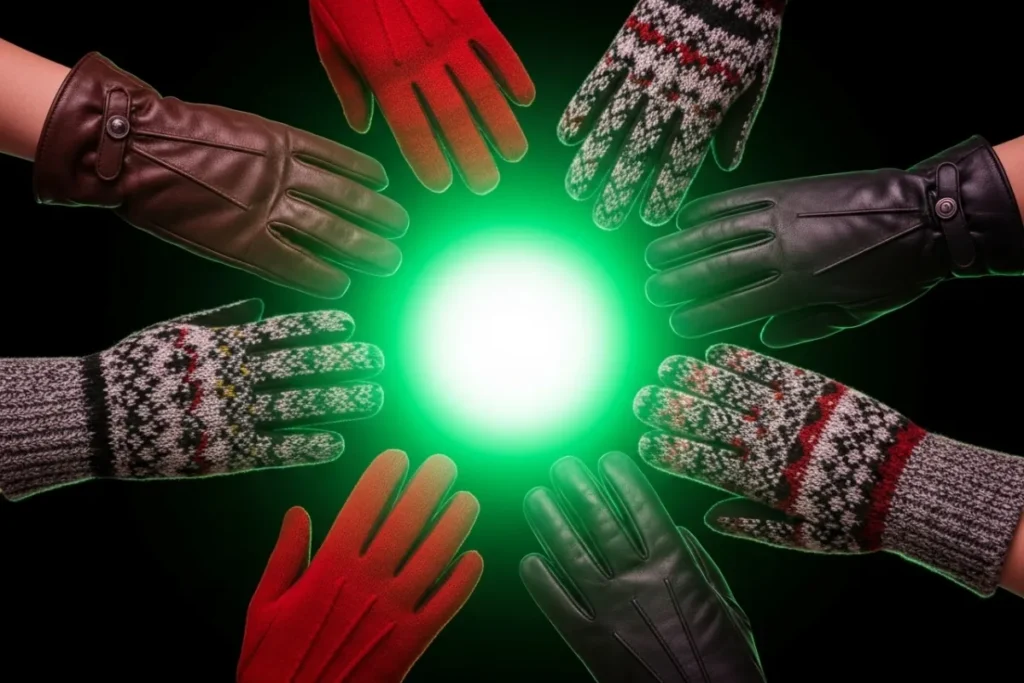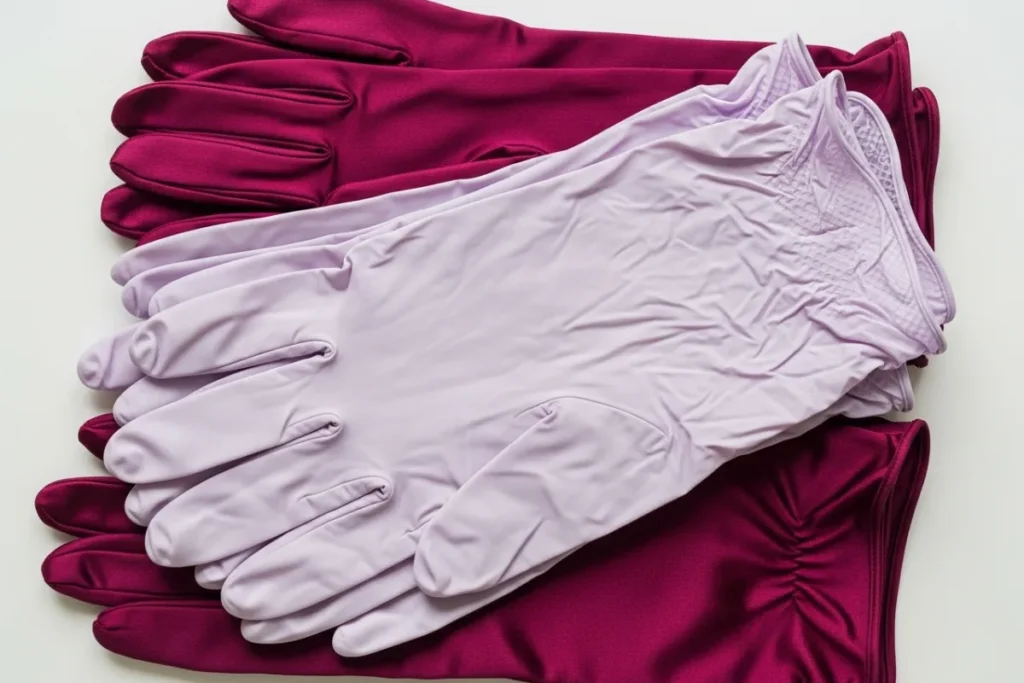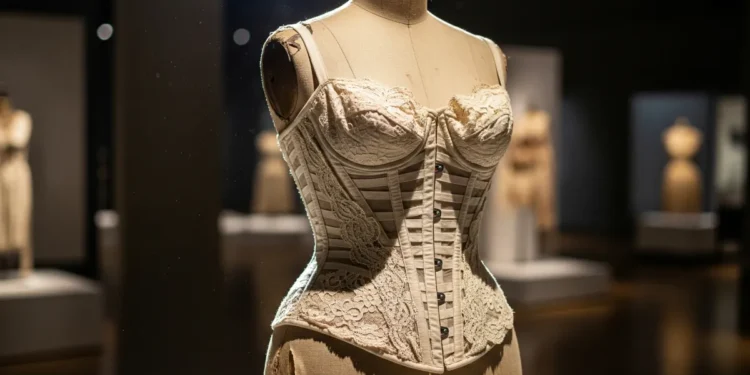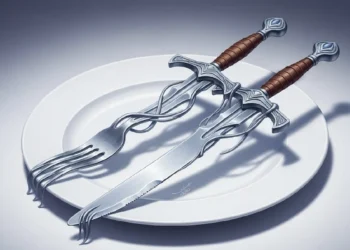Explore the duality of The Glove as both protective gear and symbols of social status throughout history. Discover how gloves have evolved from practical items in ancient civilizations to significant fashion accessories today. This blog post delves into the cultural implications of gloves, their role in shaping social dynamics, and their place in contemporary fashion trends. Uncover personal stories and societal perspectives that reflect the intricate relationship between gloves, fashion, and identity, while considering their future in a world increasingly focused on safety and health.
Table of Contents
Introduction to the Glove’s Duality
Throughout history, The Glove have served as more than mere accessories; they embody a complex interplay between protection and social division. From early civilizations to modern fashion, the significance of gloves transcends their functional role. Originally designed to protect hands from the elements, they have evolved into powerful symbols of social status and identity. Various cultures have adopted wearing gloves to signify sophistication, etiquette, and a sense of social belonging. This trend has led to gloves becoming intertwined with societal norms and class distinctions, illustrating how fashion can reflect and reinforce social hierarchies.
In contemporary contexts, The Glove have been revisited, especially amidst global challenges such as health crises. During the COVID-19 pandemic, they re-emerged as protective gear and an emblem of caution against contamination. This duality—the act of wearing gloves for safety while simultaneously acting as a barrier between individuals—mirrors historical uses in both formal and informal settings. It showcases how gloves have maintained their relevance, adapting to changing societal values and health considerations.
The symbolism of The Glove in cultural narratives extends to literature, art, and rituals. They signify elegance in aristocratic settings, while at times, also serving as practical barriers that maintain personal space. The juxtaposition of protection versus division continues to manifest in various forms, revealing how an item as mundane as gloves can shape interpersonal dynamics. As we delve deeper into the historical and contemporary implications of gloves, we will explore their role in defining fashion trends while navigating their capacity for fostering connection or instigating separation.
A Brief History of Gloves in Fashion
The Glove have a long and intricate history, serving various purposes throughout the ages. Initially, in ancient civilizations, gloves were primarily practical items designed for protection. Ancient Egyptians, for example, utilized them in their daily lives to shield their hands from the harsh sun and to provide safety from the wear and tear of their environment. As societies advanced, gloves began to transition from mere functional accessories to symbols of social status and style.
During the Middle Ages, The Glove took on added significance in Europe, representing nobility and class distinction. Wealthy individuals often wore elaborately designed gloves embellished with intricate details, showcasing their wealth and fashion sense. The phrase “a glove fits” evolved during this period, further cementing the association between gloves and one’s social standing. This trend continued into the Renaissance, where gloves adorned with lace and jewels became an essential fashion accessory among the aristocracy, marking a clear divide between different social classes.
Fast forward to the 18th and 19th centuries, The Glove became synonymous with elegance and refinement, particularly in the context of formal events. Their significance shifted yet again during the industrial revolution, when mass production made them more accessible to the general public, allowing various segments of society to adopt this fashion statement.
In the 20th century, The Glove reflected the changing attitudes towards fashion and protection. World events such as the Great Depression and the World Wars influenced common perceptions, with gloves symbolizing both utility and a continual link to social status. Today, while gloves still serve protective purposes—ranging from medical applications to fashion statements—their role in defining social structure remains prevalent. The ongoing intersection of gloves with culture and identity demonstrates how this accessory adapts to the nuances of human expression and social hierarchy.

The Protective Function of Gloves
The Glove have historically served multiple protective functions, providing safety and comfort to users across various contexts. Their primary role is to shield hands from physical harm, infectious agents, and hazardous materials. The design and materials used in gloves can significantly impact their effectiveness in offering protection, making the choice of glove appropriate for the specific task crucial.
For instance, rubber and latex gloves are essential in healthcare settings, as they create a barrier against pathogens and biohazardous materials. These gloves play a pivotal role in infection control, ensuring that health professionals can perform procedures without compromising their health. Conversely, work gloves made from durable materials like leather or Kevlar help stave off injuries in industrial settings, providing protection against cuts, abrasions, and extreme temperatures.
Moreover, the evolution of gloves also intersects with the realm of fashion and social status. In many societies, wearing gloves has become synonymous with elegance and sophistication, reflecting one’s position in the community. Fine leather The Glove, often donned at formal events, signify not just protection but also a connection to cultural and fashion norms. This duality showcases how gloves can navigate the fine line between practical usage and social signaling.
As our understanding of contamination and health safety has grown, so has the variety of gloves available in the marketplace. Innovation in materials continues to advance, leading to the development of breathable fabrics that provide protection without sacrificing comfort. This progression has made gloves integral not only for personal safety but also for maintaining one’s social appearance in public contexts. Ultimately, while gloves serve primarily as a protective barrier, they also embody deeper cultural significances, shaping our interactions and perceptions in society.
Gloves as Symbols of Status and Class
Throughout history, The Glove have served not merely as an accessory but as a potent symbol of social status and class. In many cultures, the act of wearing gloves conveys connotations of wealth, sophistication, and, at times, even authority. For instance, during the 18th and 19th centuries in Europe, gloves became an essential component of formal wear among the upper classes. Materials such as silk and fine leather were not only practical for protection but also highlighted the wearer’s affluence and taste in fashion. Such choices in glove materials reflected broader social hierarchies, effectively differentiating the elite from the working class, who often lacked the means to indulge in such luxuries.
The fashion industry has long embraced gloves as a means to not only enhance the aesthetic of a particular ensemble but also to remark on the wearer’s social standing. Designers like Chanel and Dior have historically incorporated gloves into their collections, essentially elevating the accessory to an emblem of prestige. During significant events, such as royal ceremonies or high-society gatherings, The Glove have been worn as a sign of sophistication, reinforcing certain social norms and expectations. This trend can be traced back to the medieval era when knights donned armored gloves to signify their valor and status, underscoring how the symbolism associated with gloves evolved over time.
Moreover, The Glove have been used to signify division between different classes. While they are often associated with the upper echelons of society, public figures wearing gloves in specific contexts may evoke feelings of separation or exclusivity. Even today, gloves continue to symbolize a blend of protection and social commentary, revealing the complex relationship between fashion and social status. As such, understanding the historical significance of gloves aids in recognizing their ongoing role in societal dynamics.

Isolation and Emotional Distance: The Glove’s Role
The concept of gloves transcends mere functionality; these garments often symbolize deeper emotional landscapes, especially in terms of social interactions and cultural perceptions. Traditionally, The Glove serve to protect the hands from environmental factors or contamination, yet their use can also evoke feelings of isolation and emotional distance. In various societies, the act of wearing gloves during interactions can create a palpable barrier between individuals, signaling a reluctance to engage physically or emotionally.
Cultural norms heavily influence the interpretation of gloves as a means of distancing. For instance, in certain cultures where physical touch is an important element of communication, donning gloves can imply a lack of connection. This physical boundary can lead to feelings of alienation or misunderstanding, reinforcing social hierarchies and class distinctions. Consequently, The Glove can serve both to protect against contamination as well as to fortify divisions within social structures, accentuating differences in status and accessibility.
It is crucial to note that while gloves serve practical purposes, they can also subtly communicate a message about the wearer’s emotional intent and willingness to engage. The choice of wearing gloves during social interactions speaks volumes about how one navigates the delicate balance between protection and the potential for division, often leaving those who observe this social norm to ponder the true implications behind this simple accessory.
Cultural Perspectives on Gloves
Throughout history, The Glove have transcended their basic function to serve as powerful symbols within various cultures. This phenomenon can be observed in many societies worldwide, where gloves carry meanings that often extend beyond mere protection from the elements. In several traditions, gloves are worn during significant rituals or events, reflecting both social status and cultural identity.
In Western cultures, for example, The Glove have historically been associated with formality and elegance. The practice of wearing gloves during formal events dates back to the medieval period when they signified nobility and wealth. During the Victorian era, gloves became a staple of upper-class fashion, serving as an accessory that distinguished social ranks. Conversely, in some indigenous cultures, gloves might serve practical purposes tied to their environment—protecting individuals from harsh weather, yet they can also be seen as a marker of social roles within the community.
In other parts of the world, The Glove hold significant symbolism in rituals. In Japan, for instance, beautifully crafted gloves are often used in traditional dance performances, where they enhance the beauty of the movements while simultaneously denoting cultural pride. Here, gloves represent both an attachment to cultural heritage and a pursuit of aesthetics. On the contrary, certain cultures view the donning of gloves as an act of distancing oneself from others, reinforcing social divisions. By wearing gloves, individuals may convey a message of exclusivity, avoiding direct contact that could symbolize closeness or belonging.
Thus, across varying societies, the significance of gloves fluctuates drastically. They can embody concepts of protection, serve as markers of fashion, and symbolize broader cultural narratives. Understanding these different perspectives allows one to appreciate how gloves act as mediators of social interactions, representing a complex intersection between connection and separation throughout history.

The Glove in Modern Fashion Trends
In recent years, The Glove have made a notable resurgence in contemporary fashion, emerging as a versatile accessory that speaks volumes about both individual style and social status. Designers around the world are reinventing gloves, incorporating innovative materials and unique designs that reflect current fashion trends and cultural sentiments. This revival can be attributed to a broader fascination with historical fashion, where gloves were once considered essential to elegance and sophistication.
Modern fashion houses have embraced a variety of materials when crafting gloves, ranging from luxurious leather and fine silk to innovative synthetics and ethically sourced textiles. This diversity in material not only serves aesthetic purposes but also emphasizes the practical aspects of gloves as protective gear against the elements. As the focus on sustainability grows, many designers are also choosing eco-friendly fabrics, reflecting a collective cultural shift towards conscious consumption. This approach not only protects the wearer but also serves to reduce contamination in the fashion industry.
Furthermore, The Glove hold an intriguing position within the dichotomy of connection and isolation in fashion. On one hand, they symbolize a fashionable statement, showcasing one’s taste and attention to detail, while on the other, they can represent a barrier between the self and the environment. This duality reflects broader societal themes where fashion often embodies both unity and division. In some instances, the act of wearing gloves can project a sense of exclusivity and privilege, indicating a wearer’s social status, while simultaneously distancing them from tactile experiences and personal interaction.
Ultimately, the modern interpretation of gloves illustrates their evolving role in fashion. They are no longer exclusive to specific occasions or functions but have become essential components of everyday wardrobes, embodying a complex blend of protection, style, and profound cultural symbolism.
Personal Experiences with Gloves: Connection and Distance
The Glove have stood as a compelling symbol throughout history, representing both fashion and a form of social status. Individuals around the world have shared their personal anecdotes that reveal the multifaceted role of gloves in their lives, highlighting their dual nature in fostering connection while simultaneously creating barriers.
For some, wearing gloves has become a cherished tradition during special occasions. A woman recounted how her grandmother always wore a pair of elegant gloves to formal events. This custom extended beyond mere aesthetics; it was a way for her grandmother to connect with her heritage, emphasizing the significance of presentation. In this context, The Gloves not only served as a fashion statement but also bridged generations, connecting families through shared values and cultural practices.
Conversely, there are experiences that showcase gloves as a means of separation. A nurse described the routine of donning sterile gloves before caring for patients. Although intended for protection against contamination, the gloves also created a physical barrier that distanced her from patients, transforming the intimate nature of caregiving into a clinical procedure. This duality exemplifies how gloves can highlight differing social statuses; while they protect the wearer, they can also signify a divide between caregivers and those they serve.
Moreover, The Glove have permeated various aspects of life, impacting interactions in both personal and professional settings. A businessman shared that wearing gloves during a meeting projected authority and sophistication, subtly reinforcing his status. Yet, he recognized that this same gesture could alienate him from his colleagues, crystallizing a distance that could hinder genuine collaboration.
These personal stories invite readers to reflect on their own relationships with gloves. Whether viewed as a tool for connection or a means of distancing oneself socially, gloves continue to evoke strong feelings, reinforcing their symbolism in culture and society. In navigating this complexity, individuals must confront the profound implications gloves have on our interactions and identities.
Conclusion: The Future of Gloves in Fashion
Throughout history, gloves have occupied a unique space at the intersection of fashion, culture, and social status. Initially crafted for protection, they evolved into symbols of class and distinction, often reflecting societal hierarchies and personal wealth (see more on the history of gloves). The dual nature of gloves—as both protective gear and fashion statements—presents an intriguing dichotomy that continues to play out in contemporary society.
As we navigate the complexities of modern life, the role of gloves appears to be shifting once more. The recent emphasis on health and hygiene, particularly in light of global events such as the COVID-19 pandemic, has reignited interest in gloves. This renewed focus leans heavily on their protective functions, further solidifying gloves’ association with cleanliness and safety. However, the question remains: Will this emphasis on protection encroach upon their symbolic significance as a fashion accessory?
Moving forward, the future of gloves in fashion may hinge on how societal trends evolve. As environmental consciousness rises, we may see a push for sustainable materials and designs that align with consumers’ growing ethical concerns. Furthermore, the blending of functionality and aesthetics could usher in a new era of glove designs that prioritize both protection and style. Fashion houses may begin to reinvent gloves, incorporating innovative textiles that serve dual purposes—offering sanitation while still allowing for self-expression.
Ultimately, while gloves have always served practical purposes, their symbolism within culture and society continues to evolve. They encapsulate themes of protection versus division, bridging the gap between functionality and personal identity. How society interprets this balance will be critical in shaping the trajectory of gloves in the realm of fashion and social status as we move forward.








